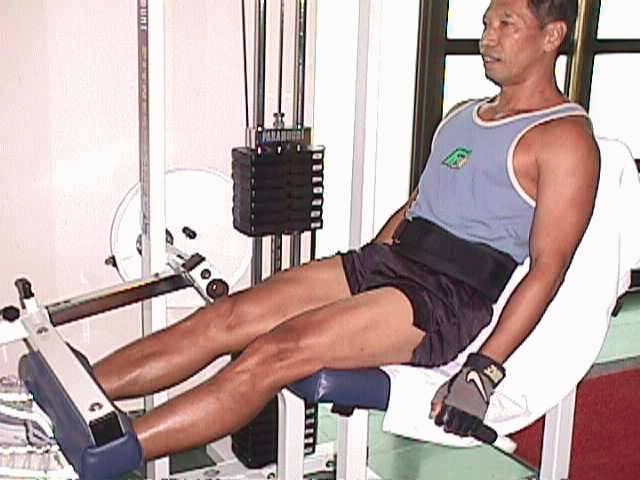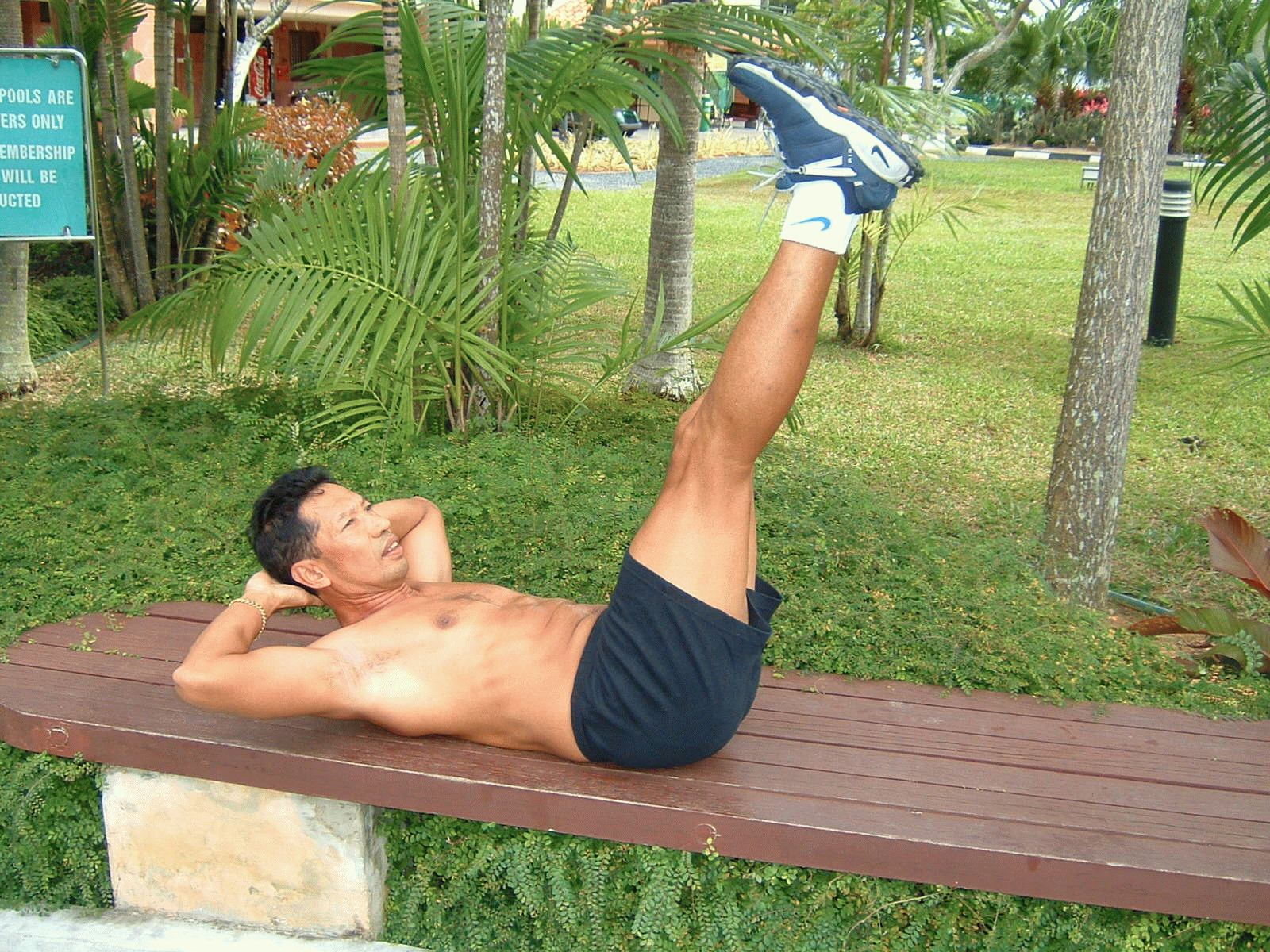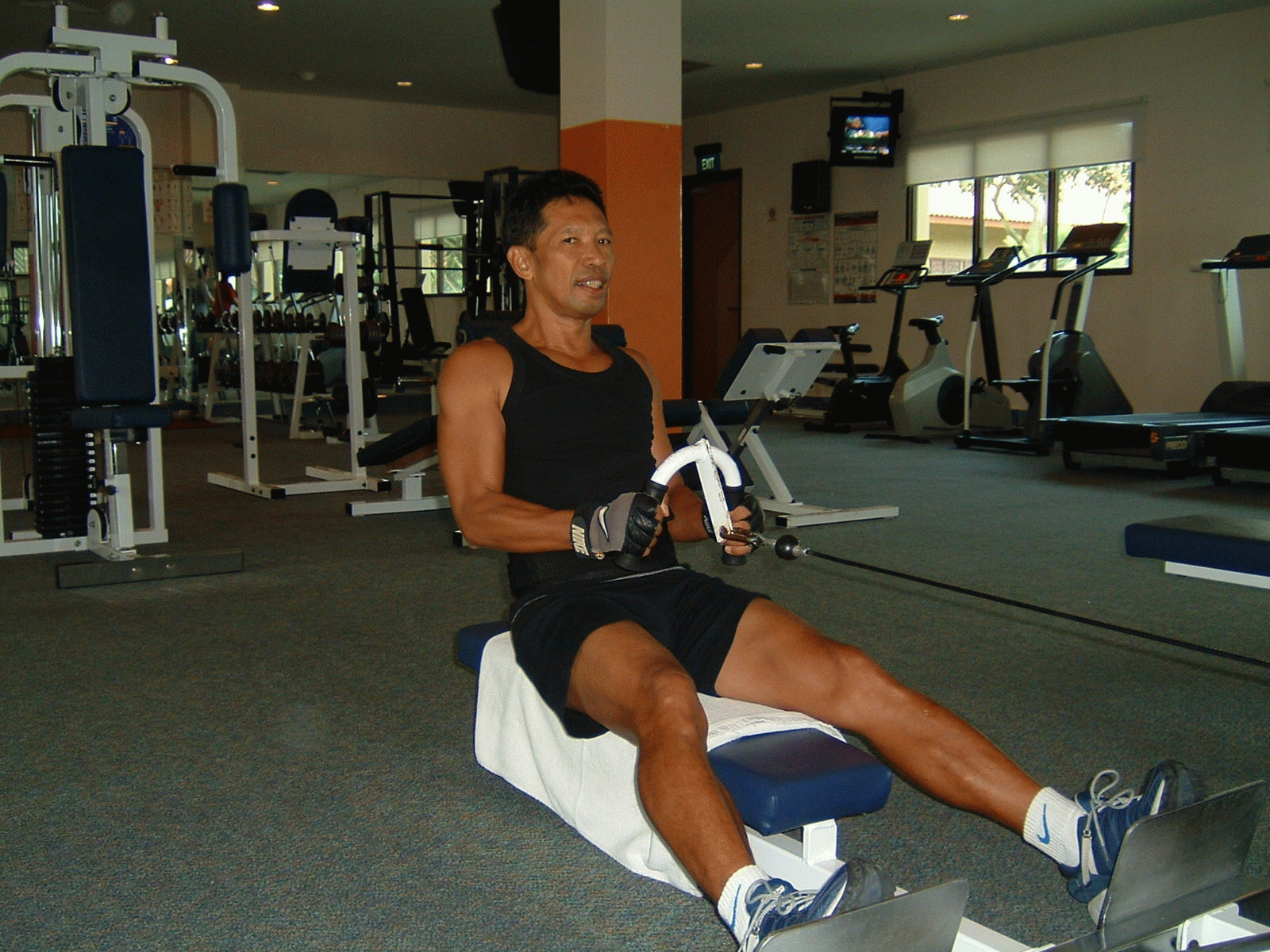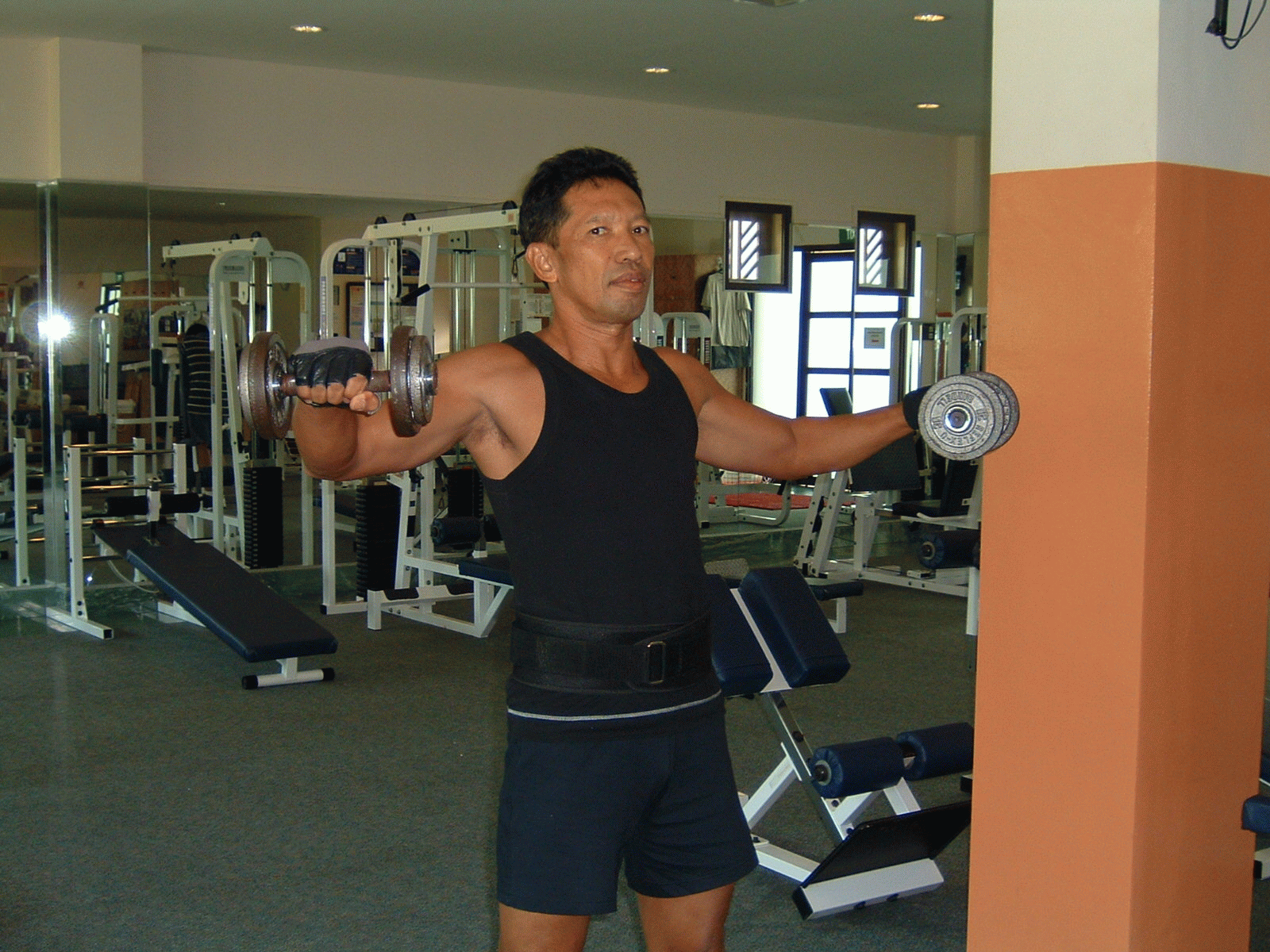 |
"Train
for your sport." That's what the fitness instructors are telling us these days. And it's true; you need to train your body
to be able to meet the particular physical demands of any athletic activity. But what exactly does "sport-specific training"
mean for tennis players?
Watch any match and you'll get a general idea: Every player needs to stop and start quickly,
scramble to get to wide balls, and use the core of the body to provide balance and rotate through ground strokes, all while
hitting with power and accuracy. These skills don't just happen; they're all built on a solid fitness foundation. Because
of that, a well-structured conditioning and strength program that focuses on injury prevention and performance enhancement
should be an integral part of every tennis player's training plan.
During the past few years, endurance athletes in a number of sports
have added resistance exercises to their training programs to boost their muscle power.
Scientific studies have linked
resistance training with a reduced rate of injury in athletes. It fortifies leg muscles and strengthens weak links' in athletes'
bodies, including the often-injured hamstrings and shin muscles, as well as abdominal and low-back muscles.
Resistance
work also improves tendon and ligament strength and increases bone density, which decreases the risk of injury.


Here's a look at a tennis player's major muscle groups, with
exercises to keep dominant and weaker sides in balance
MUSCLE GROUPS:
SHOULDER
The muscles that internally
rotate the shoulder (pectoralis major, anterior deltoid, latissimus dorsi) are typically 33 percent stronger than the external
rotators (posterior deltoid, infraspinatus) on the dominant side in tennis players. Every time you hit a serve or a forehand
you use your internal rotators, and they become quite strong. The external rotators typically must be strengthened to maintain
normal shoulder function and prevent injury.


TRUNK
The benefits of core training
The significant benefits of core training
follow through to whatever you are involved in, because the area around your trunk and pelvis is where your center of gravity
is located. A strong core gives you:
- Better posture
- More control
- Improved, more powerful performance
- Injury prevention and rehabilitation
- Increased protection and "bracing" for your back
- A more stable center of gravity
- A more stable platform for sports movements
When you have good core stability, the muscles
in your pelvis, lower back, hips and abdomen work in harmony. They provide support to your spine and help transmit increased
power and performance for just about any activity.
A weak core makes you susceptible to lower
back pain, poor posture and a whole host of muscle injuries. Strong core muscles provide the brace of support needed to help
prevent such pain and injury -- and this discovery is why core training has become so popular among elite athletes.
Because they contract their stomach muscles with every stroke, tennis players typically develop abdominal muscles that
are stronger than their lower-back muscles. This is in contrast to most people, who have stronger muscles in the lower back.
OBLIQUES These are the abdominal muscles just above your hips along the
sides of your torso that cause the trunk to rotate when they contract. Tennis keeps trunk-rotation strength balanced on both
sides of the body because players hit both forehands and backhands, which require these muscles to be strong in both directions.
But because these muscles facilitate the rotation necessary for open-stance strokes, tennis players should train them regularly.

FOREARM AND WRIST The muscles in the dominant
forearm and wrist are 30 percent stronger than the same muscles on the non-dominant side. Within the dominant side, the pronator
muscles, which rotate the palm inward, are 40 percent stronger than the supinators, which rotate the palm outward. The pronation
that occurs in serves and ground strokes contributes to this strength imbalance.
LEGS The
quadriceps, crucial muscles for getting up for serves and exploding toward the ball on ground strokes, are twice as strong
in tennis players as the hamstrings. This is not an imbalance to be worried about, but a ratio needed by every athlete.

Strengthening Various Muscle Groups
All parts of the body can benefit from building strength, players
should key on these specific areas:
It has been stated repeatedly in the tennis literature that tennis places demands
on the ability of a player to move quickly in all directions, change directions often, stop and start, while maintaining balance
and control to hit the ball effectively. The sprinting, stopping, starting and bending nature of tennis puts repetitive demands
on the bones, ligaments and muscles to absorb the shear forces. Therefore, proper training exercises, including flexibility
and strength training, are paramount for injury prevention purposes.

.
Exercises:
Shoulder Exercise: To keep shoulder strength balanced, do rows. With a dumbbell in one hand, bend
and anchor your body by putting your opposite hand and knee on a bench or chair. With your back flat and arm straight up and
down, slowly pull the weight up to the center of your body. Hold and release to starting position. Do three sets of 10 to
15.
Forearm and Wrist Exercise: To keep forearm strength
balanced and help prevent tennis elbow, perform wrist extensions. Sit with one end of a light exercise band under your feet.
Rest your right forearm on your thigh so your hand is over your foot and hold the end of the tube in your hand, palm down.
Place your left hand, palm down, over your right forearm for stabilization. Raise your right hand, keeping your forearm on
your thigh. Hold for one second; do 15 times with each arm.
Trunk Exercise: To strengthen your lower
back and rebalance the strength in your core, try performing Superman exercises. Lie face down on the floor, arms fully extended
over your head. Lift your arms and legs simultaneously. Hold for one to five seconds, release, and return to starting position.
Work up to 20 repetitions.

Obliques Exercise: To keep
your obliques strong, do crunches with a twist. Lie on the floor with knees bent, back flat against floor. Place your arms
on the same side of your body, holding a tennis racquet in both hands. Bring both arms up and across your body in a diagonal
movement while using your trunk to rise up. Do 20 reps and switch sides.
Legs Exercise:
Strength can be built
in the quads with standing squats. Put a barbell of comfortable weight across your shoulders (or use a Smith machine), point
your feet slightly outward, bend your legs 90 degrees, then power the bar up until you're standing. Keep your back
straight throughout. Do 15 repetitions
The eight exercises in your circuit
Here is the sequential format provided
in this training plan for each circuit, with an analysis of how it helps the athlete:
Total-body exercise: Four-count
squat thrusts
1. Develops strength
and mobility in your knee and hip joints – important for high-speed movement. Develops stability and strength
in the upper trunk, abdominal, and pelvic regions, strength that is necessary to control torso movements during the running
stride or when you strike a ball. Greatly increases your cardiac demand, hikes the power of your leg muscles, and increases
the impact forces (upon landing) as well, fortifying the bones in your legs and feet.
Upper-body exercise: Push-ups
2. Increases upper-body strength, developing abdominal
and hip-flexor stability. Improves stability, helps to control hip, trunk,
and shoulder movements as you move quickly. Also promotes balance between the upper and lower body.
Lower-body exercise: Scissor
step-ups
3. Develops leg strength, power, and dynamic-balance control (coordination) - without which you can't move quickly, whether it's from one end of the football pitch to the other, from the baseline
to the net on a tennis court, or from the start to the finish of a 10k race. Cardiovascular benefits of this exercise can
be increased by speeding up your stepping cadence or by increasing the height of the step.Enhances leg-muscle power
and improves mobility of the hip and knee joints.
Core/trunk exercise: Abdominal
sit-backs
4. Increases abdominal stability, which carries over to improved
posture and better core stability as you run. A strong pelvic girdle and trunk provide the anchor point for a strong
pair of legs, allowing you to use your legs in a maximally powerful manner during quick sprints – or during sustained,
vigorous running.
Total-body exercise: Squats
to presses
5. Increases strength and power in your legs, hips, low back, abdominals, shoulders, and arms. Note that the whole-body involvement of this exercise increases your cardiorespiratory requirements,
compared to the more commonly used, isolated pressing exercises such as bench and shoulder presses.
Upper-body exercise: Body-weight
rows
6. Improves
pulling strength of the upper-back, shoulder, and arm muscles, and does for
the back side of the body what the push-up does for the front side. Also serves to increase stabilizing strength in the low
back, gluteals, and hamstrings, all of which are critically important for quick movement whenever you participate in your
sport. You'll achieve a balance between lower and upper body strength by performing this exercise.
Lower-body exercise: Single-leg squat
7. Develops muscle strength in the quads, hamstrings, and gluteals,
the muscles which provide much of your power while running. By strengthening your hip and knee joints in a coordinated and
integrated fashion, your leg strength and running power should improve tremendously. It can also help you improve your vertical
jumping ability.
Core/trunk exercise: Low Back Stabilisers
8. Heightens low-back
strength providing for proper posture while running and also provides excellent
‘motion control' of the torso and hips throughout the running stride. As a result, you'll move more quickly –
whether it's to return a serve on the tennis court or to reach the football in time to score a goal.
Remember that improvements in
how your body functions can occur whenever you overload your body's systems. It provides an overload of your cardiorespiratory
system (especially the hard circuits), taxes your muscular system by forcing it to work against increased resistance, and
forces the key joints involved in moving your body to go through a wider range of motion than they commonly encounter.
|
 |















